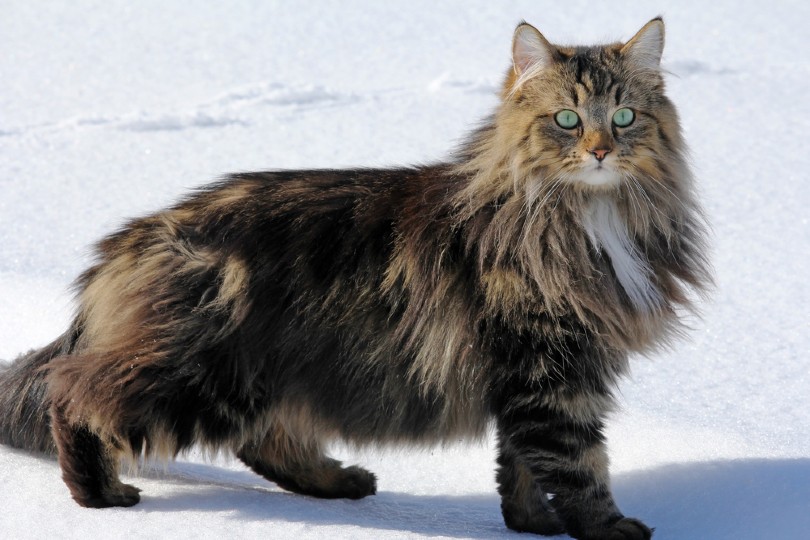More than 80 million pampered felines share our homes and norwegian forest cats for sale lovers are abundant across our country. But, those cats living outdoors have few admirers and live in constant danger of imminent death, usually at our hands!
There is no way to know for certain, by some experts estimate that the feral cat population in North America may equal or even exceed that of the “owned’ cat population. Feral cats are not socialized to humans and avoid contact with people whenever possible. In contrast, “stray” cats are often those cats that have left a home or have been abandoned by their owners. These strays may have been socialized to humans at one time and will often approach people and may even allow petting. All cats, feral, stray and owned cats that simply roam the neighborhood are all members of the domestic species, Felis catus.
Traditionally, feral and stray cats are trapped whenever possible and then are taken to local animal shelters. Once at a shelter, if they are socialized to humans and have a calm temperament, some cats may be adopted out. However, the vast majority of these feral cats may be harboring diseases, such as Feline Leukemia, or they are totally wild and cannot be adopted out. These cats will often face death by lethal injection and will be euthanized. According to an organization for feral cats known as Alley Cat Allies nearly 70% of the cats that arrive at shelters are euthanized making euthanasia the number one documented cause of death in felines in the United States.
Alley Cat Allies formed their organization in 1990 hoping to stop the killing of millions of cats. One of their founders, Becky Robinson, recalls walking in an alleyway and seeing a whole colony of “tuxedo cats”. Observing the alley cats interacting with one another gave her insight into the social lives of these “wild” animals and prompted her to work towards their preservation. Since that memorable night, Becky and her volunteers have introduced the Trap-Neuter-Return (TNR) concept to the United States. Originally conceived in England, these TNR programs have helped to improve the health of many feral cats through vaccinations and sterilization and are working towards reducing the size of the feral cat colonies.
Simply put, the TNR uses volunteers to capture the feral cats in humane cage traps. These wild cats are then transported to participating veterinarians who anesthetize, neuter and vaccinate the animals. To help identify the cats that have been sterilized so that they do not have to be trapped again, a notch is cut in the cat’s ear. The notched ear is easier to see from a distance than a tattoo on their belly. Once they have recovered from the surgery, the cats are taken back to their original capture location and allowed to re-join their home colony. Caretakers will then monitor the overall health of the colony and conduct a population census while providing feeding stations for the cats.
The TNR programs do have their critics. Bird watchers are concerned about the impact of feral cats on songbird populations and other wildlife. Neighbors living near feral cat colonies worry about cats urinating and defecating in their gardens. While public health officials are concerned about zoonotic diseases, such as toxoplasmosis, plague and rabies. These colonies also seem to have a higher incidence of Feline Leukemia, and Feline Immunodeficiency Virus that can cross over to “owned” cats that may be outside. The website TNR Reality Check states that there is little evidence that TNR programs help control the feral cat population.

